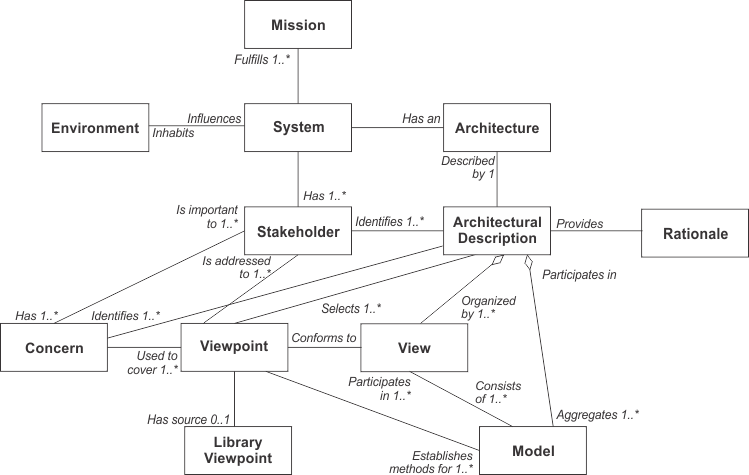Introduction
In the TOGAF ADM (Architecture Development Method), architectural artifacts play a crucial role in documenting and describing the architecture of a system or enterprise. Let’s break down some of the key concepts:

* The notation used is from the Unified Modeling Language (UML) specification.
System and Architecture:
- A “system” is a collection of components organized to achieve specific functions.
- The “architecture” of a system is its fundamental organization, including components, relationships, and design principles.
Architecture Description:
- An “architecture description” consists of artifacts that document the architecture.
- Architecture views are key artifacts in TOGAF, representing different perspectives of the architecture.
Stakeholders and Concerns:
- “Stakeholders” are individuals or groups with key roles or concerns about the system.
- “Concerns” are crucial interests of stakeholders that determine the acceptability of the system.
Views and Viewpoints:
- A “view” is a representation of the whole system from the perspective of specific concerns.
- A “viewpoint” defines how to construct and use a view, including schema, information, modeling techniques, and rationale.
Viewpoint and View Distinction:
- Viewpoints are perspectives or vantage points, while views are specific representations.
- Viewpoints can be stored in libraries for reuse, making them generic and applicable to different architectures.
Architecture Models:
- Architects create architecture models using different tools.
- Views comprise selected parts of models to address specific stakeholder concerns in the design.
Concerns and Requirements:
- “Concerns” are areas of interest for stakeholders.
- The distinction between concerns and requirements is emphasized. Concerns are broader areas of interest, and requirements are specific and measurable.
Decomposition into Requirements:
- Concerns serve as the root for decomposing into requirements.
- Requirements, associated with concerns, are represented in the architecture and should be SMART (Specific, Measurable, Achievable, Relevant, Time-bound).
Summary
Architecture views are essential for communicating the overall architecture to stakeholders, addressing their concerns, and ensuring that requirements derived from concerns are met in the design process. The use of viewpoints and the explicit identification of concerns contribute to effective communication and understanding among stakeholders.